When we last left Hiram Maxim, he had perfected his very first machine gun – the world’s first practical machine gun, really. However, while his gun worked well, it was not yet a design which was suitable for military acceptance. It was too large, too complex, and too expensive. If he wanted the gun to become popular, Maxim needed to make it quick and easy to assembly and disassemble.
One of the major hurdles to doing that was the feed system. Maxim’s first gun had a feed system with two separate spindles – it took a lot of space, and was too complicated. He also needed to simplify elements like the rate of fire control, to remove components like hydraulics from the gun. The first major step in this direction was detailed in Maxim’s patent #1307 of 1885. In this gun we can clearly see a gun halfway to becoming the classic Maxim which we are familiar with today.
The feed system of this gun was reduced to having only one spindle, and the lock was beginning to look like a proper Maxim lock. The moving parts were simplified to the barrel, sideplates, and lock, operating inside a fixed receiver box. The fusee spring made its first appearance, and the crank handle took a form which was starting to look like the final version. I do not know how many of these guns were ever made, but I suspect it could be as few as just one, as they were never marketed in any way, and served simply as an experimental stepping stone. As far as I know, none exist today. However, the same fellow who created the animation of the first Maxim has done a similarly exhaustive and outstanding job modeling this Patent #1307 design:
While this second prototype design was an important step forward, it was not enough. The gun had to be still simpler and more user-friendly. The result was what became known as the “Transitional” gun, and its main innovation was to make the feedblock and lock into self-contained and interchangeable components. This would become one of the fundamental strengths of the Maxim; that the gun would disassemble into discreet pieces, each easily removed and replaced. Thanks to our talented computer modeling benefactor, we have a great video showing the workings of the Transitional as well!
In addition, I had a chance to get a bunch of photos of a very rare surviving Transitional. I will leave you with those, and our next chapter in this story will be when Maxim finally breaks through with his World Standard gun and starts selling them in real numbers!





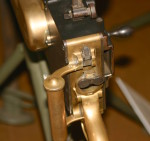



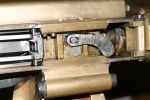

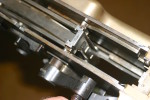
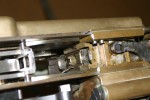
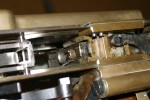
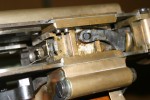
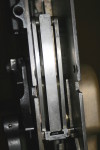



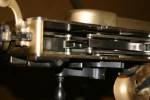
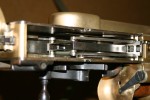
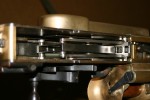
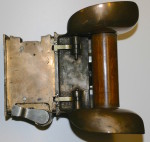
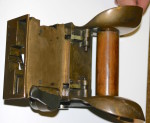
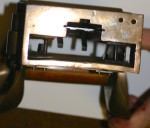
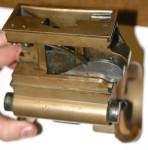
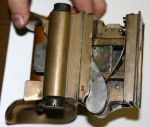
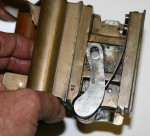
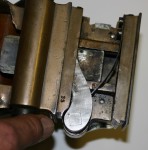
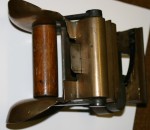
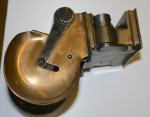
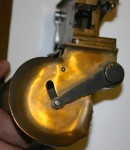
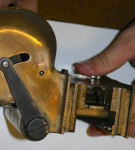
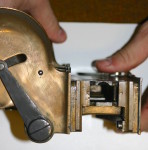
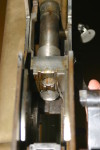
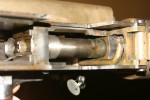

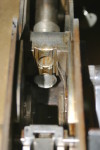
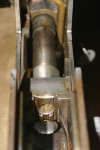

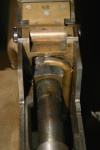
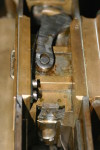
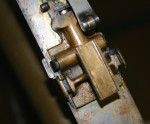
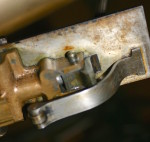
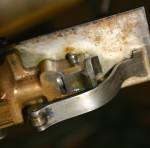

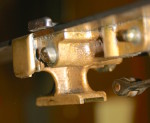
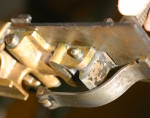
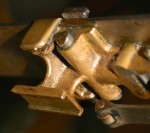
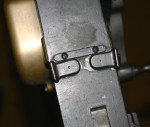
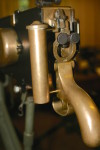
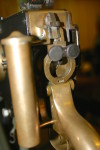
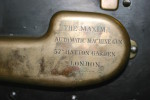
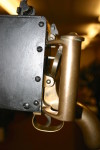

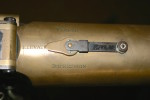
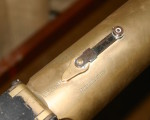
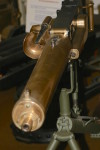
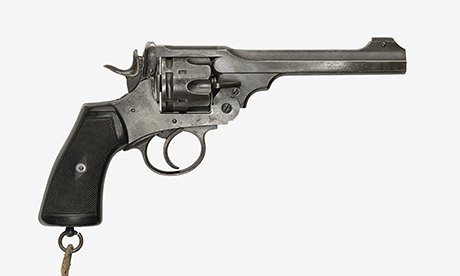
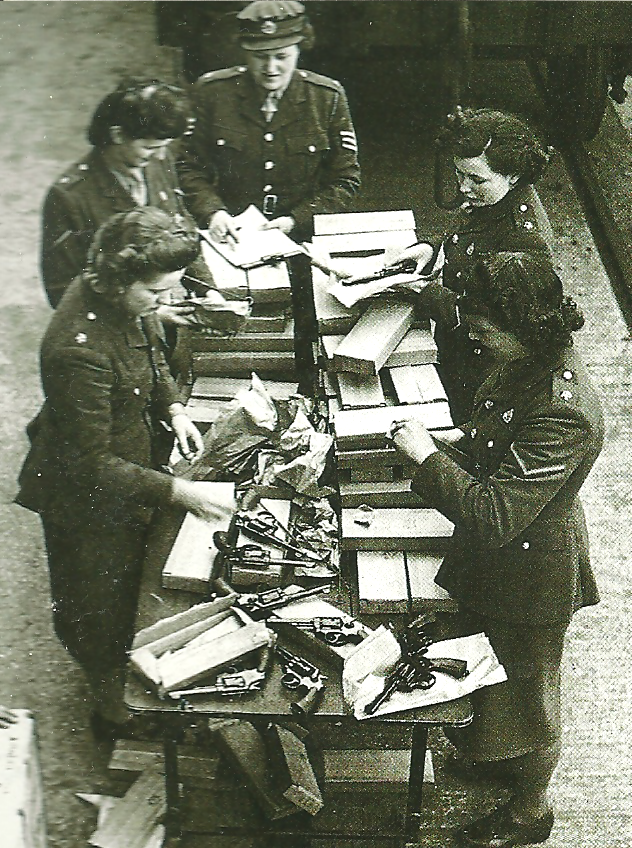
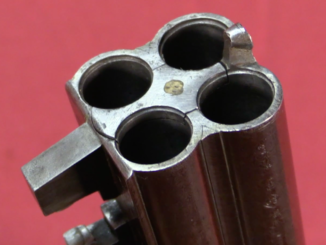
“Say hello to my big barking friends!”
Just a few machine guns and about six men each turned the cavalry charge into a turkey shoot. Rather than deploy one “secret weapon” for intimidation, the commander should have at least two in close proximity for creating a no-charge zone… Or am I wrong?
Any weapon need proper doctrine to be used effectively.
With development in technology doctrine need to be updated.
Flawed doctrine can spawn mediocre weapon (see for example Boulton Paul Defiant – British fighter aeroplane, which can NOT fire forward).
If I am not mistaken, no-one except before WW1 that wide use of machine guns.
For example France has only 2156 machine gun when war broke out
(according to World War I: The Definitive Encyclopedia and Document Collection by Spencer C. Tucker)
The Defiant couldn’t handle conventional fighters in a fair fight but it turned Luftwaffe bombers into mincemeat at night, since at particular angles the bombers couldn’t shoot back.
“it turned (…) bombers into mincemeat at night”
But was that objective of Air Ministry Specification F.9/35?
The objective of the Defiant was to intercept unescorted bombers and kill them from below where the bombers couldn’t shoot back.
The Boulton Paul Defiant was a true “DRUT”. It did not and could not carry airborne intercept radar. I believe that all were in training command by the time airborne intercept radar was fielded and the ground home stations active while the Defiant was in front line use could not reliably get the Defiant close enough for visual identification. The Germans did one better with “Schragemisik” , jazz or slanted music, against the allies. The British had no “belly defense” for their viermots.
Did you actually read the words “at night” at all!? During the winter blitz on London (1940-1941) 4 night-fighter squadrons equipped with Defiants shot down more Luftwaffe bombers than any other British fighter during the usual midnight interception. As for ID tagging the targets, no sane RAF bomber formations would fly directly over London itself from the south east, right!? And by the way, the Defiant MK II HAD airborne radar built in from the start of production!!
Great graphics, thank you for sharing these and thanks to the guy who created them. I’d never heard of a “fusee spring” before. Googled it and am found myself amazed at such ingenuity. Such a simple elegant solution to a relatively complicated problem. That leads to “escapements”. Got the brain working a little bit, thanks.
Thanks for the wonderful detailed photographs, Ian.
One outstanding feature about the earliest Maxim guns ( at least the prototypes and pre-production guns ) is the extensive use of brass alloys in their construction — absolutely gorgeous from an aesthetic viewpoint, and no doubt useful in providing a visually-appealing sales pitch at the time, in addition to still being entirely practical from a mechanical standpoint. Quite a contrast to the entirely utilitarian and ultimately deadly intent of the weapon itself.
Hi Earl
this (aesthetics) is part I observe too and it amazes me. Yes they had talent for shaping things based on feel rather than purpose. Brass/ bronze components were easily cast; their main advantage.
Brass castings as opposed to forged and machined steel components… Which is cheaper? I imagine the brass is cheaper and can be cast into complex shapes with a much lower price tag than machining the same parts out of solid steel…
Normally forged vs cast and which is cheaper comes down to how many pieces are wanted. Or when just a few are needed, what skills one has.
I’ve spent a number of years commercial casting and look to use that first when I want a few of something as there is no need to spend money. Plus little new to learn in making it.
I have a couple of friends who are very good at using a hammer, swages, anvil and hot steel to make things. They look at doing that if they need a few of something.
Things like guns are designed to match the equipment to be used to make it. If you mostly have CNC mills, you get a square/rectangle looking gun. If you mostly have CNC/screw lathes, it will be round shapes from bar stock.
You can’t cast something that is flat or that has 90 degree angles. There are well defined rules as to shape a casting needs to be. In casting a near flat, is a convex. All changes in direction on a casting has to be a certain radius that matches to thickness of the metal.
That is most of the reason that this Maxim looks like it does with it’s aesthetics. Not very much or no art for reasons of eye appeal, but just the practical art of casting a part. From what I can see in the pictures of the castings, I see nothing that wasn’t done for practical casting reasons.
“Brass/ bronze components were easily cast”
Lanchester sub-machine gun has magazine well produced in that technology:
http://www.deactivated-guns.co.uk/detail/Lanchester2_MK1_3.htm
Daweo, BG McMahon in Britain, wrote a book entitled “Fire Tactics” emphasizing firepower andinvented the “Mad Minute” – “His request for additional machine guns to be allocated to each battalion was rebuffed and he instead worked on increasing the rate of fire from the riflemen.”
https://en.wikipedia.org/wiki/Norman_McMahon
I believe he was in touch with US Army’s John Henry Parker “As an Army officer, Parker continued to expound his theories on the tactical employment of machine guns, particularly in the offense. He was a prolific writer, and contributed numerous articles and treatises to the Infantry Journal and other Army publications.
https://en.wikipedia.org/wiki/John_Henry_Parker_(general)
LG “It did not and could not carry airborne intercept radar.”
Actually, it could and did
“The improved Defiant Mk II model was fitted with the AI Mk. IV Airborne Interception radar and a Merlin XX engine, increasing the aircraft’s performance, particularly at night time. In September 1941, 264 Squadron became the first to receive the Defiant Mk II, bringing them into operational use by mid-September. The principal users of the Mk II night fighter were 96, 151, and 262 Squadrons.As the radar-equipped Defiants began filtering through to operational squadrons, the Luftwaffe’s bombing campaign petered out as German forces had become heavily engaged on the Eastern Front as they embarked upon the invasion of the Soviet Union.
Defiant night fighters typically attacked enemy bombers from below, in a similar manoeuvre to the later German Schräge Musik methods. Defiants attacked more often from slightly ahead or to one side, rather than from directly under the tail.”